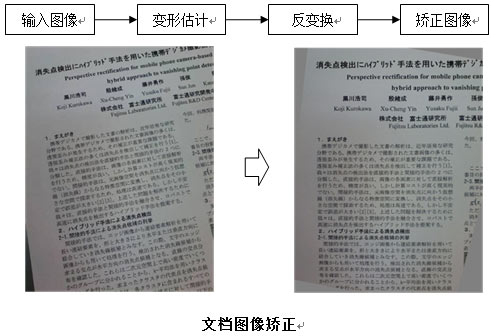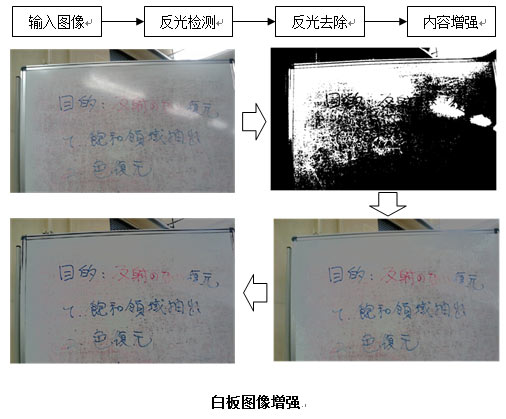Archived content
NOTE: this is an archived page and the content is likely to be out of date.
Image processing technology for mobile devices
【Overview】
With the improvement of camera in mobile devices (such as mobile phone and PDA), the shooting function becomes an important application of the mobile devices and facilitates the users to record and archive the interesting targets in the daily life. The Quality of the images is subjected to some restrictions such as shooting angle and lighting condition, which results in distortion and reflection. We study and develop out two image processing technologies for mobile devices, which can automatically rectify the target document images and eliminate reflection and enhancement on the whiteboard image.
【Solution】
Due to the restriction of the computation power, the image processing technology for the mobile devices should satisfy two preliminary requirements: low computation complexity and low memory cost. We study and develop two technologies which are described as follows:
1. Document images rectification
The document image taken by the mobile usually includes perspective distortion. The four edges are required to identify the disappearing points in two directions for the common perspective distortion rectification. In many cases, the mobile phone can only take part of the whole document image, so we should precisely estimate the affine distortion of the document distortion by the direction information of text rows and character strokes and then rectify it by reverse transformation. We apply a multi-level framework to effectively improve precision and speed of the distortion parameter estimation. This technology is successfully applied in Fujitsu F905i, F906i and F01A mobile phone from 2007.
2. Whiteboard image enhancement
The quality of the whiteboard image is mainly affected by the high-brightness reflection and writing style. We first detect the reflective area and adjust the brightness of this area to eliminate reflection and naturally transit to non-reflective area. We enhance the color and contrast of the contents on the whiteboard. Compared to the original image, visibility and readability of the enhanced images is effectively improved. This technology is successfully applied in the Fujitsu F01B and F02B mobile phone from 2010.
【Technical points】
- Estimate affine distortion
- Detect reflective area
- Enhance image
【Synoptic diagram】


Contact Information:
Yu Hao: yu@cn.fujitsu.com
Sun Jun: sunjun@cn.fujitsu.com
He Yuan: heyuan@cn.fujitsu.com
